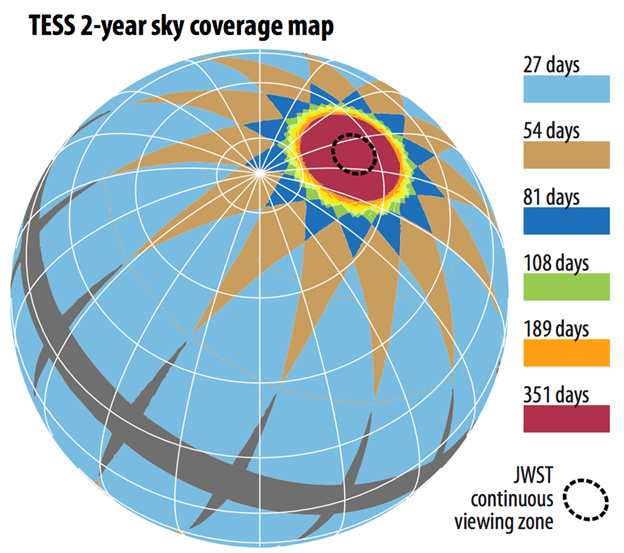Exoplanetology has been on a tear recently. This is largely due to an abundance of data collected by a new generation of satellites, one of which is the Transiting Exoplanet Survey Satellite (TESS). Now the project has reached a new milestone with another release of data - 2,200 planet candidates collected, far surpassing the 1,600 expected candidates in the mission's first two years. Now comes a potentially even more daunting task - following up with each of them.
That follow-up is where the real potential lies, according to Natalia Guerrero, the lead author on the paper releasing the latest findings. The paper itself catalogues all the planets collected during the 2 year “primary mission” of TESS, from 2018 to 2020. Now the satellite is on an extended mission, completing an "all-sky survey" over both the northern and southern hemispheres.
NASA Video showing some of the worlds TESS has discovered.Credit: NASA / MIT / TESSEven though it was only able to observe a relatively small patch of the northern hemisphere for a significant length of time, TESS was still able to find thousands of potential exoplanets. There might even be more planets than the number TESS found hiding in that small patch of sky. Planets with longer orbital periods, such as Neptune or Jupiter, might have been completely missed, as their half orbital period (which is when TESS would have been able to observe them) was longer than the 350+ days TESS spent on the most observed patch. If the planets don't happen to pass in front of the star in that period, their transit would not have been recorded.
Video discussing one of TESS's more unique finds - a planet orbiting two stars.Credit: NASA Goddard Space Flight CenterEven with the limitations of the data it collected, TESS still found an amazing variety of planets, which are catalogued in a recent press release from NASA. Ranging from Earth-sized planets in the habitable zones of their stars to planets surrounding white dwarves, there are plenty of interesting places to look both for exobiologists and planetary scientists.
What might be even more interesting is the selection of where TESS spent most of its observing time. It overlaps the observing window of the (hopefully) soon-to-be launched James Webb Space Telescope (JWST). JWST will be able to observe the atmosphere of some closer exoplanets directly, leading to even more insight into some of our closest exoplanet neighbors.
The process of finding exoplanets is showing no signs of slowing down any time soon. TESS still has more data to release from its extended mission, and even more space missions are on the horizon, with the Nancy Grace Roman Space Telescope planned to launch in about 4 years. With luck, the 2200 candidates TESS found will just be a drop in the ocean of the total number of exoplanets located in the coming years. There would be a lot more follow up work at least.
Learn More:
NASA - Space Telescope Delivers the Goods: 2,200 Possible Planets
arXiv - The TESS Objects of Interest Catalog from the TESS Prime Mission
EarthSky - TESS’s exoplanet catalog grows to over 2,200 worlds
Space.com - NASA's TESS planet hunter spied 2,200 candidate worlds in its first 2 years
Lead Image:
Illustration depicting some of TESS's planet candidates.
Credit: NASA / JPL-Caltech
 Universe Today
Universe Today

